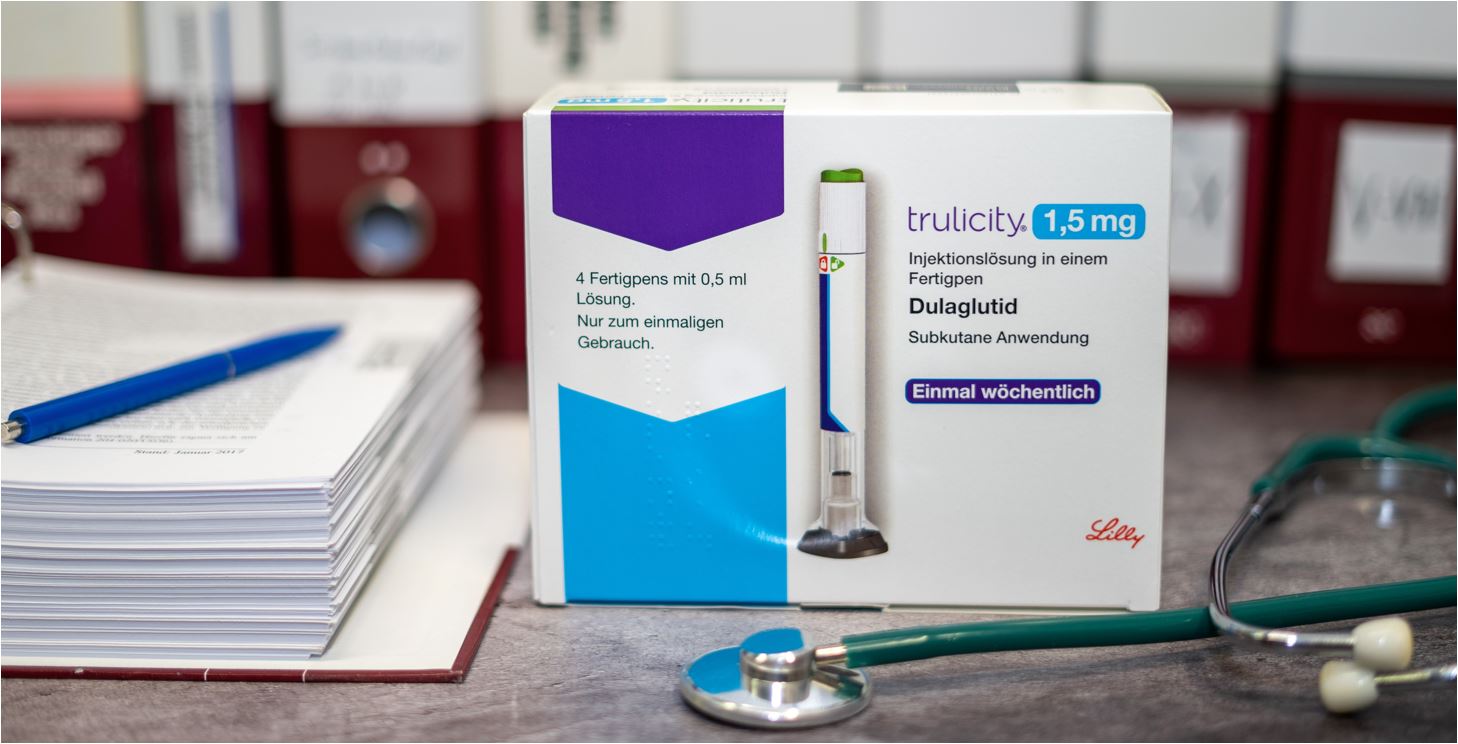When it comes to managing diabetes, there is no one-size-fits-all solution. That’s why the team at Lilly created Trulicity –– a once-weekly injectable medication that can help you meet your A1C goals by lowering blood glucose levels.
Trulicity works with your body to lower blood sugar in two ways: by helping your body release more insulin after meals and by making it easier for your body to use its own insulin.

What is Trulicity?
Trulicity is a once-weekly injectable medication used to treat type 2 diabetes. It belongs to a special class of diabetes medications known as Glucagon-like peptide 1 (GLP-1) agonists.
GLP-1 is a natural gut hormone (incretin) that is released in response to the consumption of food. Trulicity and other medications in its class are similar to this naturally occurring hormone and exert their effects by mimicking the action of incretins.
How does Trulicity work?
Trulicity works with your body to lower blood sugar in two ways: by helping your body release more insulin after meals and by making it easier for your body to use its own insulin.
After you eat, your pancreas releases insulin to help your body store or use the sugar from your meal. In people with type 2 diabetes, the pancreas doesn’t make enough insulin or the body doesn’t respond properly to insulin. As a result, sugar builds up in the blood instead of being used for energy.
Even more importantly, the release of gut hormones (incretins) after an oral carbohydrate load is blunted in patients with type 2 diabetes mellitus. Consequently, less insulin is released by the pancreas after a patient with type 2 diabetes consumes a meal.
Trulicity, by working just like naturally occurring incretins helps your body release more insulin after meals and makes it easier for your body to use its own insulin. This lowers your blood sugar and helps you manage your diabetes.
- Trulicity like other GLP-1 receptor agonists preserves beta-cell function
- Promotes the release of insulin by beta cells of the pancreas in response to food intake.
- Reduces glucagon secretion by pancreatic alpha cells. Of note, glucagon increases glucose production from the liver, leading to hyperglycemia.
- It works on a special satiety pathway in the brain leading to weight loss due to reduced caloric intake.
- By causing weight loss, as stated above, trulicity promotes insulin sensitivity or reduces insulin resistance. This means insulin is better able to reduce blood glucose levels.
What are the benefits of Trulicity?
The team at Lilly created Trulicity to help you meet your A1C goals. Trulicity can also reduce your hypoglycemia risk and help you manage your diabetes in a way that fits your lifestyle.
Unlike other common diabetes medications such as sulfonylureas and meglitinides, which stimulate the pancreas to release insulin continuously, trulicity promotes significant insulin release after a meal, thus reducing the risk for low blood sugar (hypoglycemia) during a prolonged fast.
More recently, management guidelines for diabetes mellitus have changed significantly. Diabetes drugs that have shown significant benefits in terms of cardiovascular and renal outcomes are being used as first-line medications. GLP-1 agonists reduce major cardiovascular events
Thus in addition to weight loss and glycemic benefits, GLP-1 agonists have other off-target effects. These include a reduction in the risk for recurrent heart attacks and progression of chronic kidney disease.
Time to onset of action
Trulicity starts working within two weeks of starting treatment. You may start to see a decrease in your blood sugar levels within a week.
What are the side effects of Trulicity?
The most common side effects of Trulicity include nausea, abdominal pain, diarrhea, and vomiting. Other possible side effects include severe allergic reactions, low blood sugar (hypoglycemia), and acute pancreatitis. Talk to your healthcare provider about the possible side effects of Trulicity.
Contraindications to Trulicity
- History of acute or chronic pancreatitis
- Personal or family history of medullary thyroid cancer.
Are there specific foods to avoid on Trulicity?
There are no specific food products to avoid when on trulicity. A general heart-healthy low glycemic index diet will assist in curbing significant spikes in your blood sugar when on trulicity.
Since trulicity slows down the transit of food through your gut, foods that slow gastric emptying (high fat-based meals) can theoretically exacerbate nausea during the first few weeks of therapy. There is however no objective clinical trial evidence to confirm this.
Conclusion
Verdict – there are no specific foods to avoid on trulicity. Eat a heart-healthy and low glycemic index diet.
This content is not intended to substitute for medical advice, diagnosis, or treatment. Always talk to a healthcare professional about the risks and benefits of taking Trulicity.
Kindly Let Us Know If This Was helpful? Thank You!


